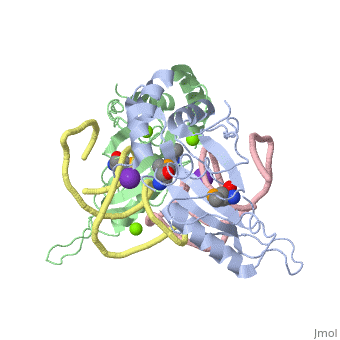The ribosome is an essential component of all living cells. It is responsible for translation of proteins using messenger RNA (mRNA) and transfer RNA (tRNA). Ribosomes are composed of both proteins and RNA known as ribosomal RNA (rRNA). There are three functional sites found within the ribosome that are essential for translation: the A, P, and E-sites. The A-site is responsible for recruiting the tRNA and the E-site is where the tRNA leaves from once the protein is removed in the P-site. The site of interest for this sandbox is the P-site, where the protein is removed from the tRNA and added to the growing chain of amino acids. Its primary component is the L5/5S rRNA complex. This complex has been proven to be an essential component to both the structure and the function of the ribosome.
This is a default text for your page Alec Bertsch/sandbox 1. Click above on edit this page to modify. Be careful with the < and > signs.
You may include any references to papers as in: the use of JSmol in Proteopedia or to the article describing Jmol to the rescue.
Function
The L5 protein is also responsible for the assembly of the ribosome. In ribosomes that fail to synthesize the L5 protein, the ribosome is unable to connect the large and small units together. Without this protein, the cell would only be able to divide a select few times. [1]
Disease
Relevance
Structural highlights
The makes up the main function and structural component of the large ribosomal sub-unit.
is one of many residues within the L5 protein that have a crucial role in the binding affinity of 5S rRNA.[2]
This is a sample scene created with SAT to by Group, and another to make of the protein. You can make your own scenes on SAT starting from scratch or loading and editing one of these sample scenes.

